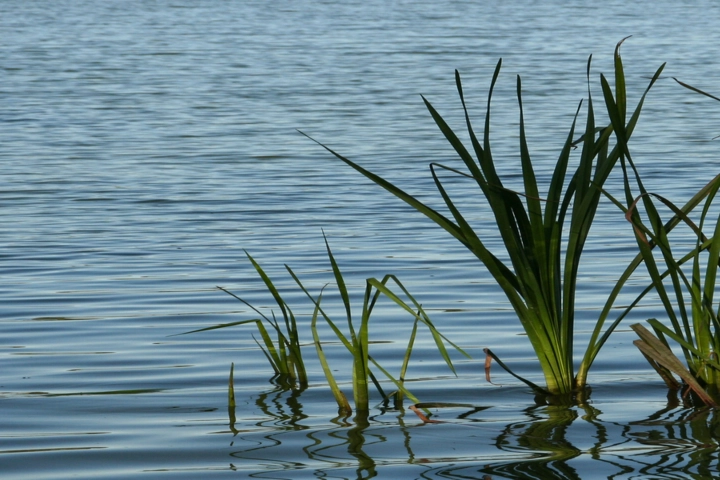
Emergent aquatic plants grow in shallow areas typically along the banks of marshes, ponds, lakes, and rivers. Unlike submerged vegetation, emergent plants are rooted in the ground with their stems, flowers, and leaves rising above the water. Emergent plants rely on aerial reproduction and get their nutrients exclusively from the soil. There are lots of desirable species and varieties of emergent plants that add beauty and are beneficial to your pond or lake. Although they supply cover, nesting areas, and food for different fish and wildlife, many consider emergent plants a nuisance.
Common Non-Native Emergent Plants Found in Florida
Central Florida grapples with several invasive emergent plant species, necessitating their removal by qualified aquatic professionals. Here are some prevalent offenders:
- Alligator Weed: This fast-growing plant thrives both on land and in water, forming toxic floating mats that obstruct waterways and drains. Its rampant spread can overwhelm pastures and crops, leading to significant losses in farm production and profit.
- Hydrilla: With stems capable of growing 6-8 inches per day during peak seasons, hydrilla poses a formidable challenge. Left unchecked, it can swiftly engulf entire water surfaces within 1 to 2 years of introduction, disrupting ecosystems and recreational activities.
- Hygrophila (Swampweed): Often found in rivers or lakes near river inflows, hygrophila forms dense surface mats, particularly in dormant waters. This invasive species impedes light and oxygen penetration, jeopardizing native plant and animal species. Controlling its spread proves arduous and costly.
- Napier Grass: Growing in clumps reaching up to 12 feet tall, Napier grass thrives in wet to dry soils along shorelines. Its dense growth obstructs canals, impeding boat launches and shoreline access.
- Water Taro: While edible and suitable for vegetable gardens, water taro becomes problematic when planted near waterways. Its invasive tendencies lead to the elimination or displacement of native plants, underscoring the importance of avoiding outdoor planting near streams or wetlands.
Get a custom treatment plan tailored to you!
Click below to leave your information and we will call you right back!
Schedule Your FREE Estimate!
Get your home, lawn, and lake in pristine condition. Leave your information and we’ll be in touch.
*During normal business hours. After hours calls will be returned the next business day.
Dangers of Invasive Emergent Plants
Invasive emergent plants can quickly dominate your body of water and hurt your ecosystem by taking nutrients from native plants and growing out of control when not kept in check. Other potential issues include:
- Extreme Oxygen Deficiency and pH Changes: Invasive plants can deplete oxygen levels in the water, leading to the suffocation of aquatic life. Furthermore, their presence may alter the pH balance of the water, further disrupting ecological equilibrium.
- Water Flow Constraints and Flooding: Dense growth of invasive plants can impede water flow, leading to stagnant areas and increased flooding risks during heavy rainfall or storm events.
- Increased Sedimentation: The extensive root systems of invasive plants can accelerate sediment accumulation, resulting in shallower water depths and reduced water clarity.
- Habitat Loss: Native species may struggle to compete with invasive plants for space and resources, leading to habitat degradation and loss for various aquatic organisms.
- Decrease in Biodiversity: The dominance of invasive species often leads to a decline in biodiversity, as native plants and animals are outcompeted or displaced.
- Reduction in Property Values: The presence of invasive plants can detract from the aesthetic appeal and recreational value of waterfront properties, potentially reducing their market value.
- Limitation of Water Activities: Dense mats of invasive plants can impede water-based activities such as swimming, boating, and fishing, diminishing the enjoyment and accessibility of recreational waterways.
Protect Your Ponds and Lakes from Emergent Plants
Sorko Services offers various pond and lake maintenance services including aquatic weed control to help you protect your lake or pond from potentially noxious intruders while preserving ecological balance. We have years of experience and are committed to giving our customers the best experience possible. For more information or to begin creating your personalized treatment plan, contact our team today.
